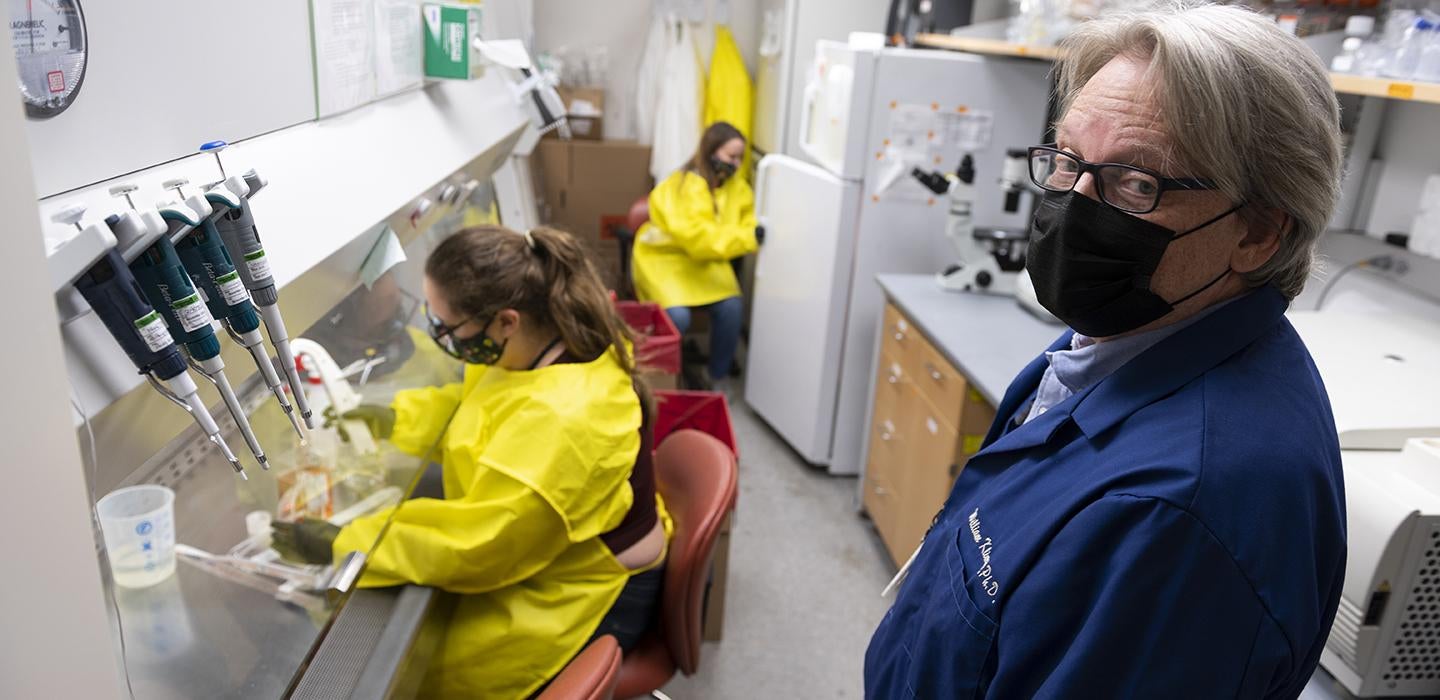
Subscribe to Pittwire Today
Get the most interesting and important stories from the University of Pittsburgh.A $14.5 million grant from the Department of Defense will help Pitt researchers study the emerging threat of a type of mosquito-borne virus capable of triggering serious brain infections.
These “alphaviruses” are a concern both due to the disease they cause and their potential use as biowarfare agents. Climate change could make them a wider threat, too.
“Climate change may have already contributed to the spread of a specific alphavirus known as eastern equine encephalitis from the northeast coast of the United States to more western areas including Wisconsin, Minnesota and parts of Canada,” said William Klimstra, associate professor at Pitt’s Center for Vaccine Research. “There is a need both for a battlefield-context therapeutic and a therapeutic for the general public.”
Typically, mosquitos are active from the last frost in the spring to the first frost in the fall. In the last 20 years, this active time has grown by about 30 days, creating a longer window for virus transmission.
Eastern equine encephalitis virus kills half the people who are infected, and other alphaviruses cause severe disease, but there are no effective treatments or vaccines for the group of viruses. Klimstra and his colleagues are poised to change that.
Along with Pitt Associate Professor Douglas Reed and Associate Professor Nathan Yates, co-principal investigator Michael Diamond and Robyn Klein at Washington University in St. Louis and Galit Alter at Harvard University, Klimstra received the funding from the Department of Defense to study interactions between the viruses and their hosts in order to develop targeted therapeutics to fight alphaviruses.
Previous studies of the family of viruses showed that they grab specific receptor proteins on the surface of susceptible cells like a handle to gain entry and then multiply. The researchers aim to prevent this by introducing “decoy” proteins that look similar to these receptors. The virus will grab on to the decoys, preventing them from entering the cell and protecting the host against the disease.
“My work has really been an evolution from basic science and pathogenesis to very translational research. Now, this grant is actually designed to bring development of the receptor decoys up to the point of a clinical trial,” said Klimstra. By employing their decoy strategy and identifying the precise factors in the hosts that allow viruses to enter the cell, the team may be able to develop a new generation of antiviral therapeutics.
The research program will be conducted in part at the Center for Vaccine Research at Pitt, where investigators have access to resources like the high-security Regional Biocontainment Laboratory, state-of-the-art equipment, diverse animal models and leading immunology experts. With these unique capabilities, Klimstra and his team plan to take therapeutic interventions from basic science to clinical studies.
This project could be the key to widespread protection against alphaviruses. “Our receptor decoy therapeutic approach could develop drugs against multiple different viruses,” Klimstra said. “The concept of receptor decoys could be used against viruses from many different families.”
— Dana Smith


